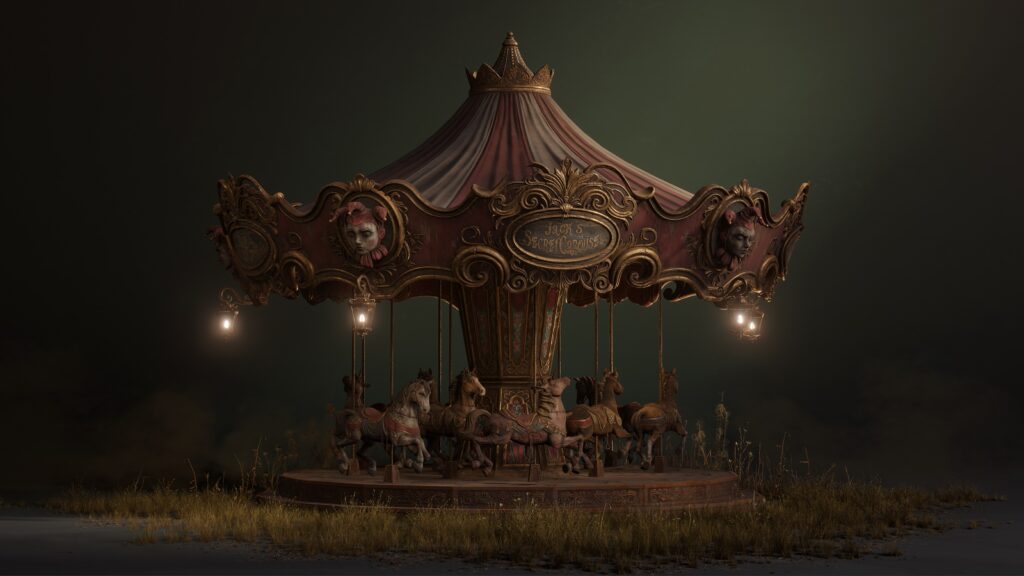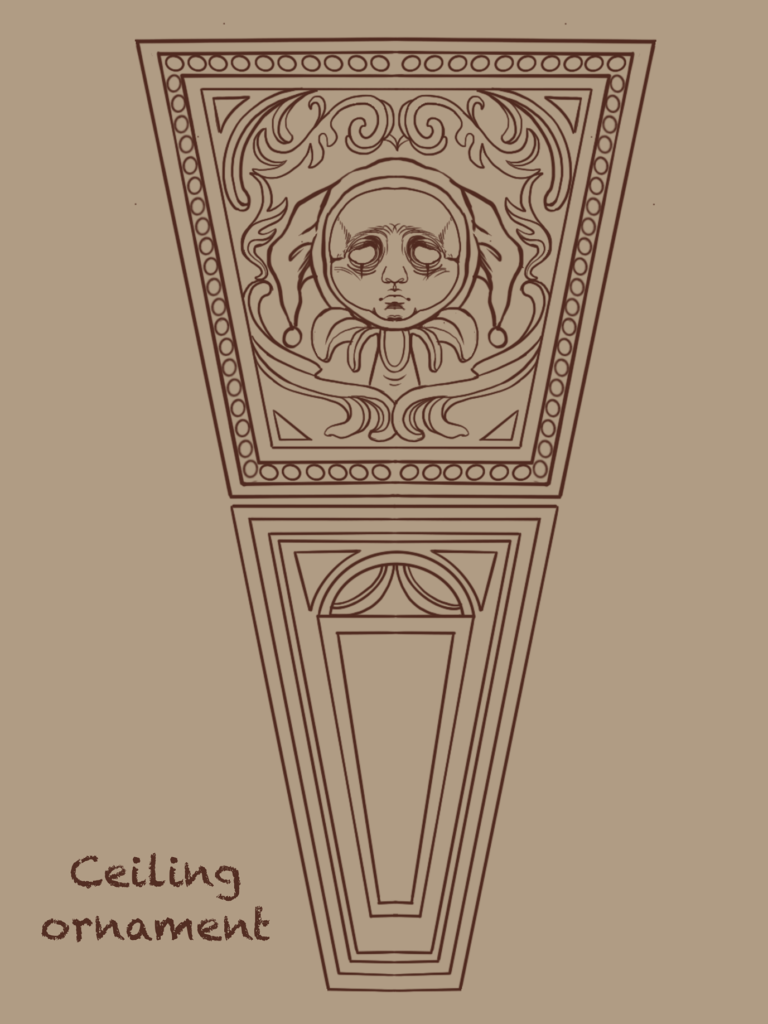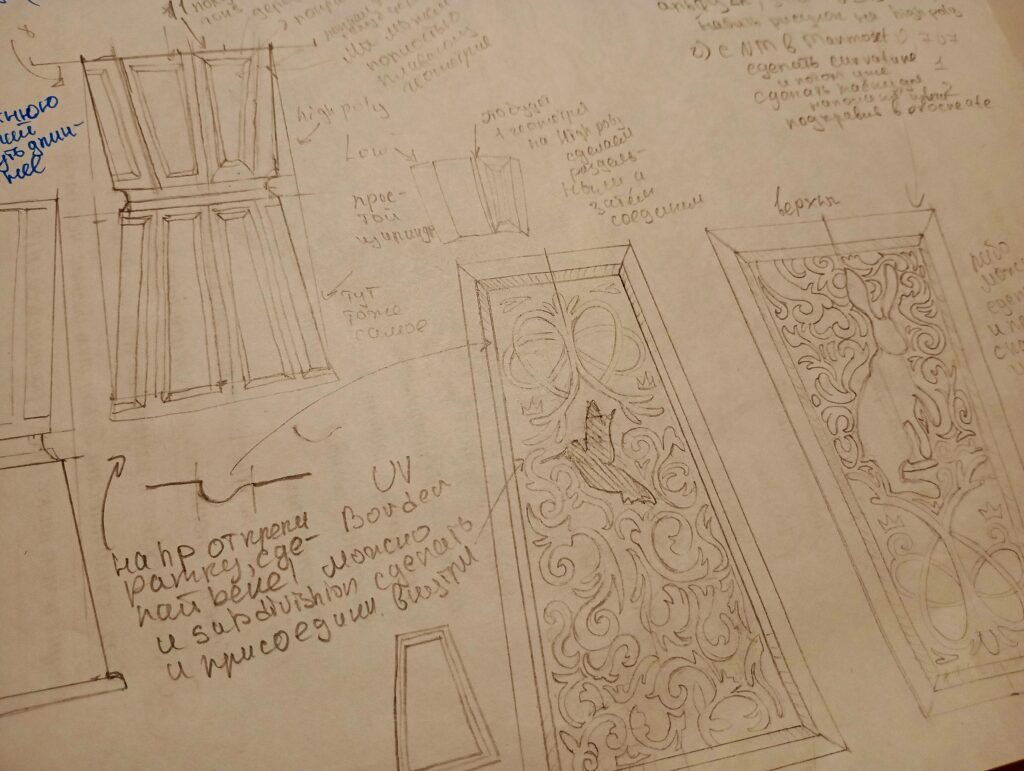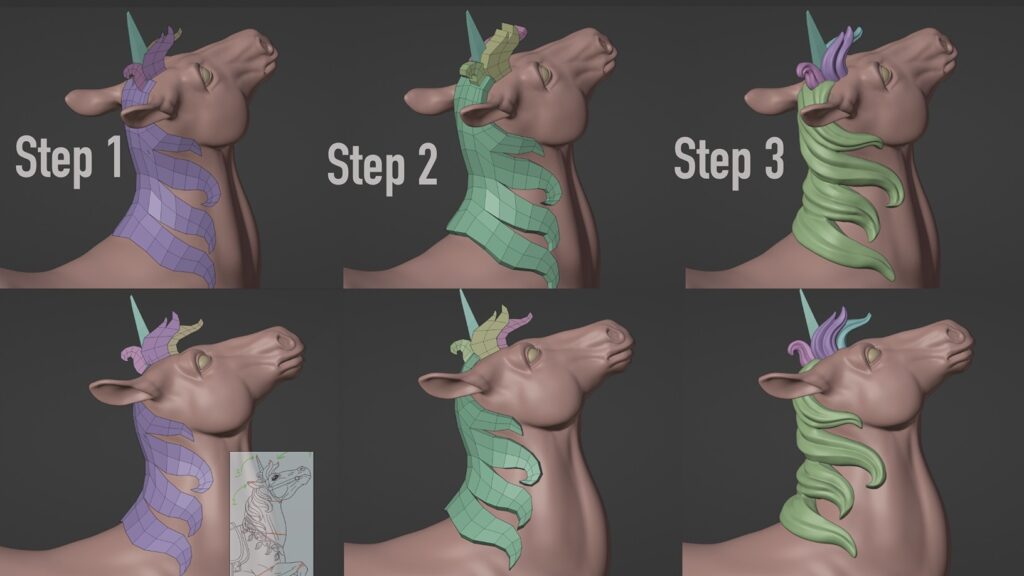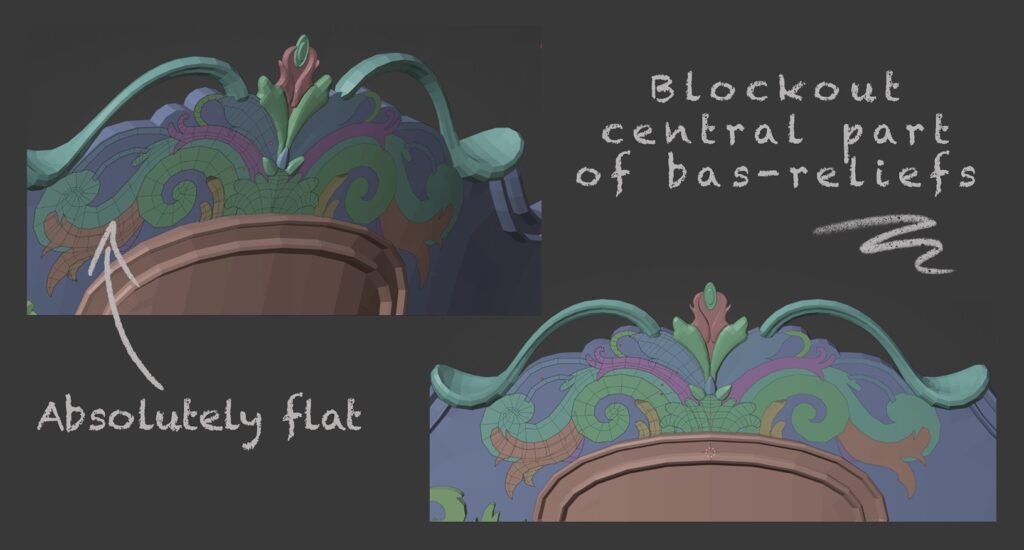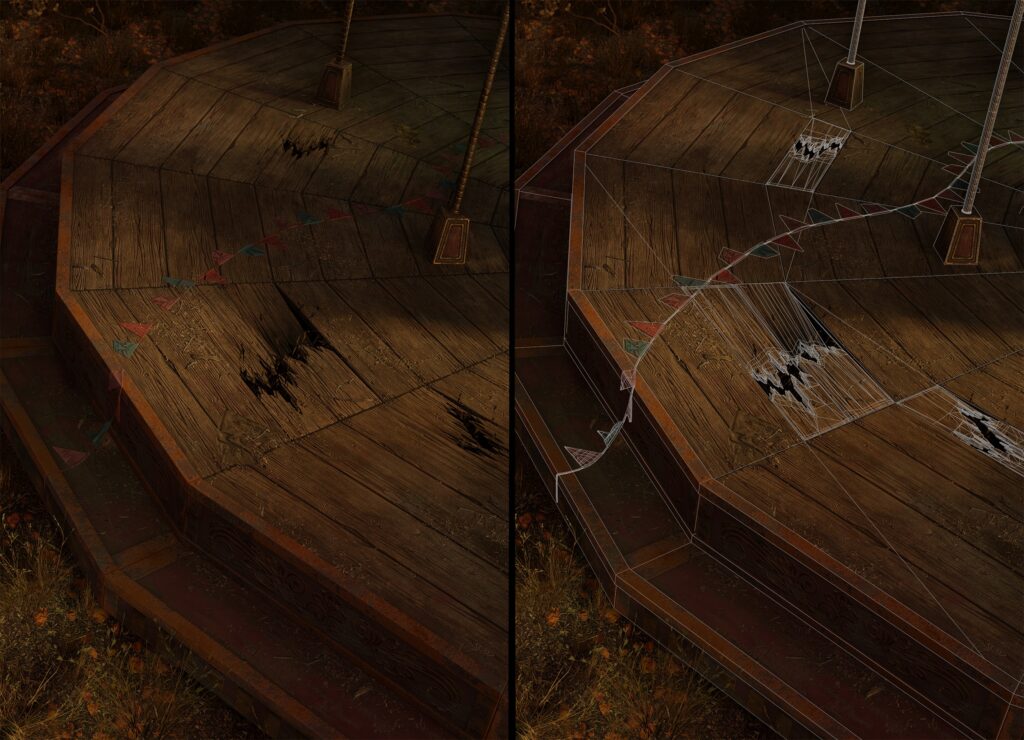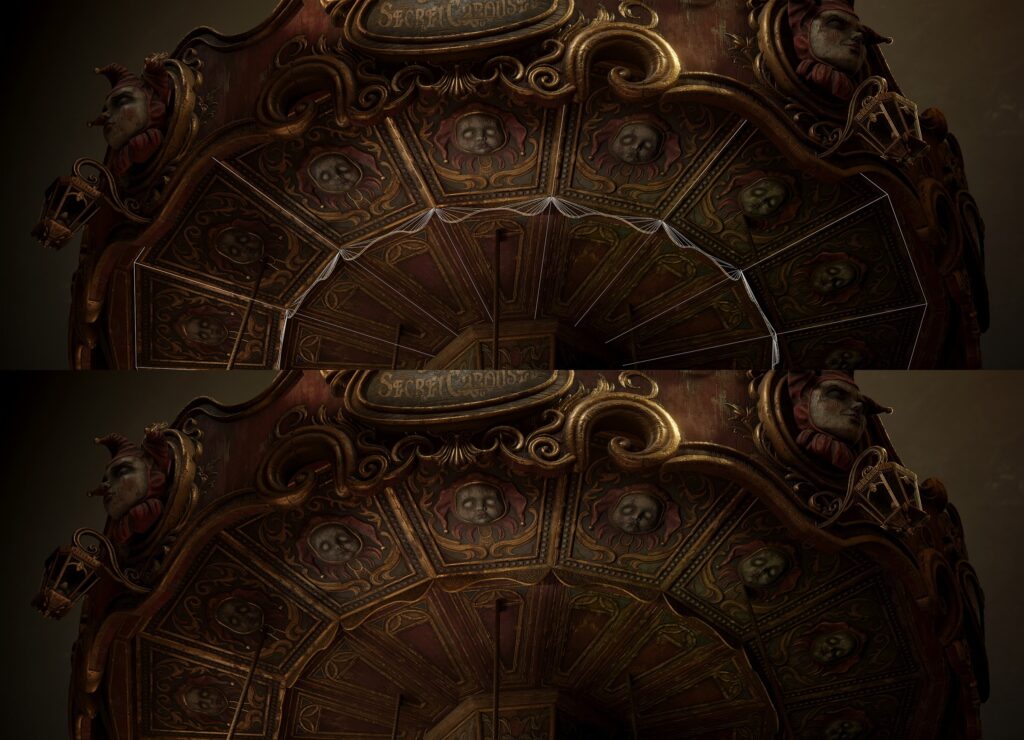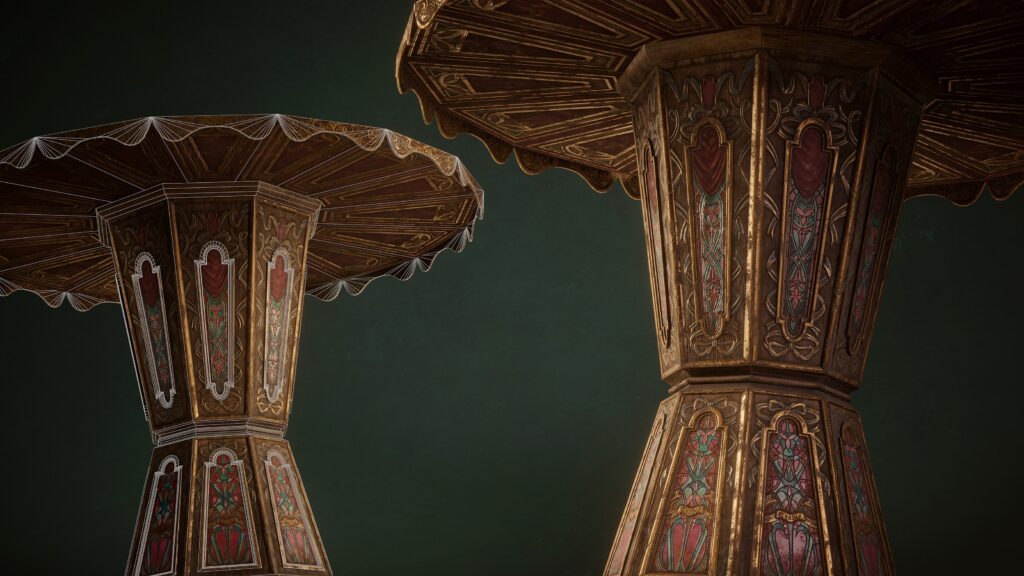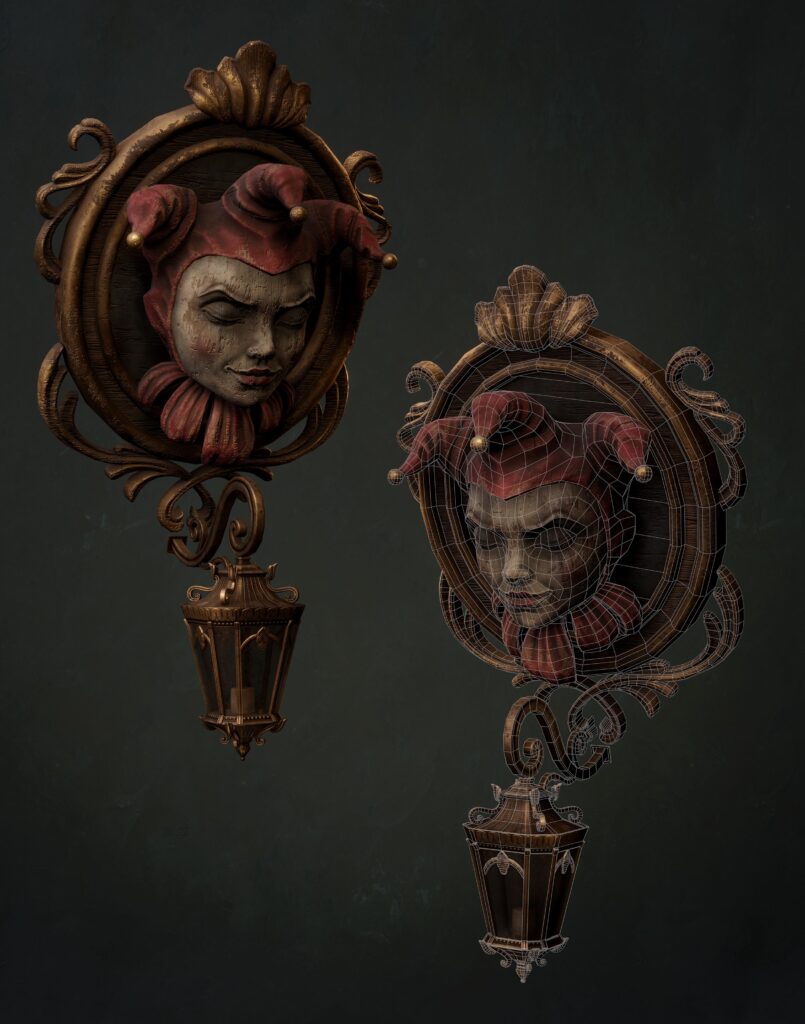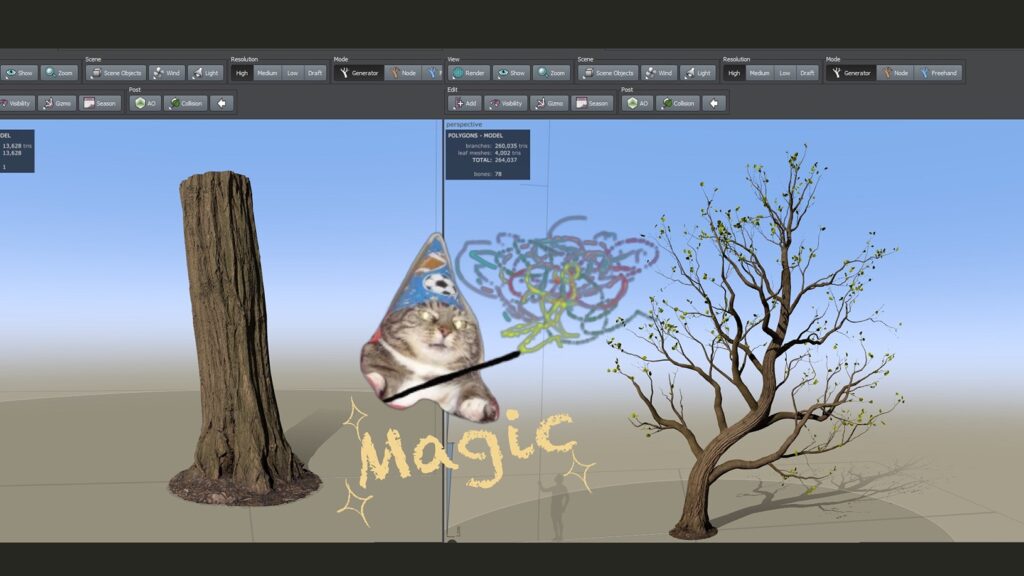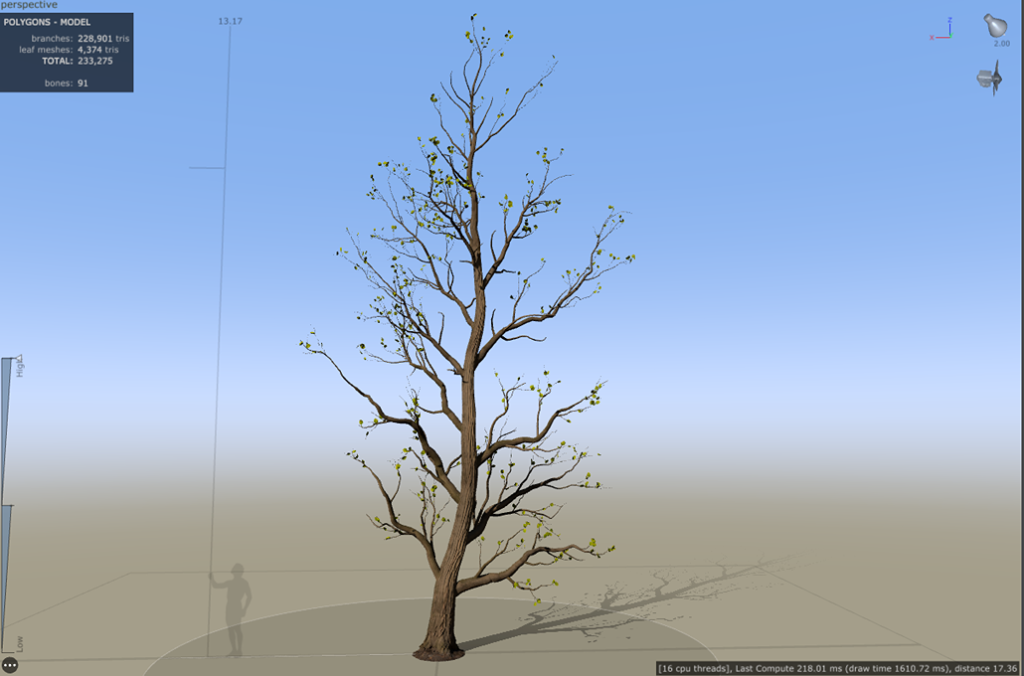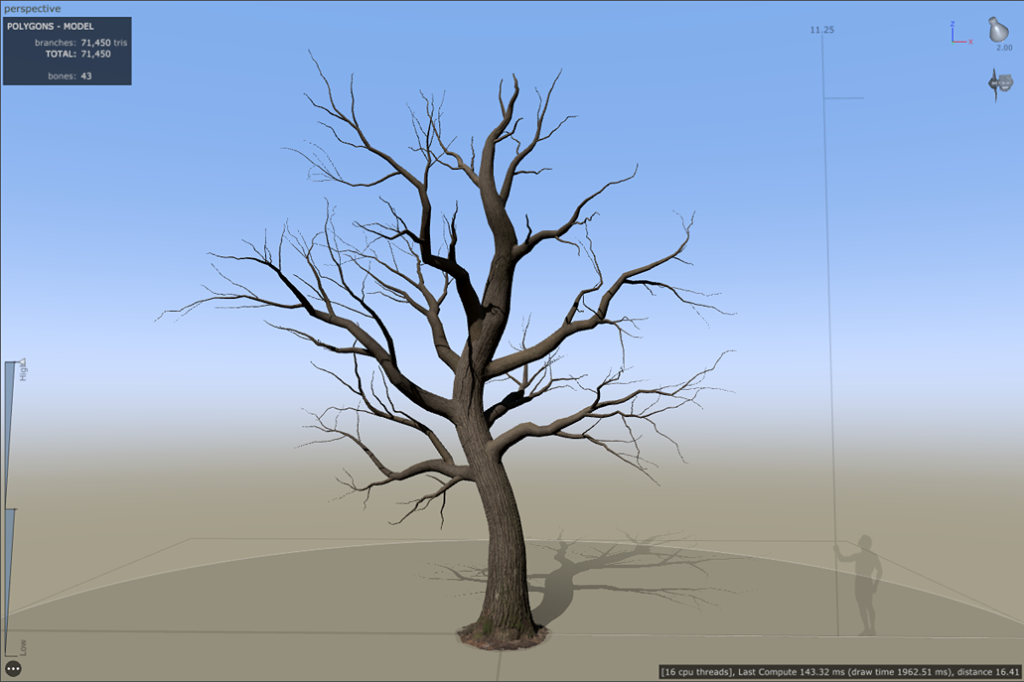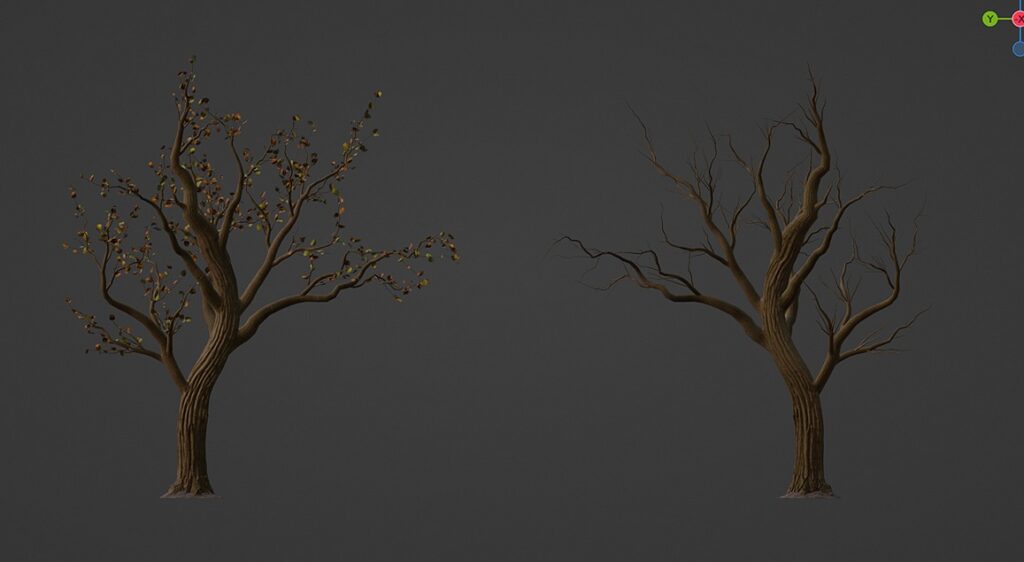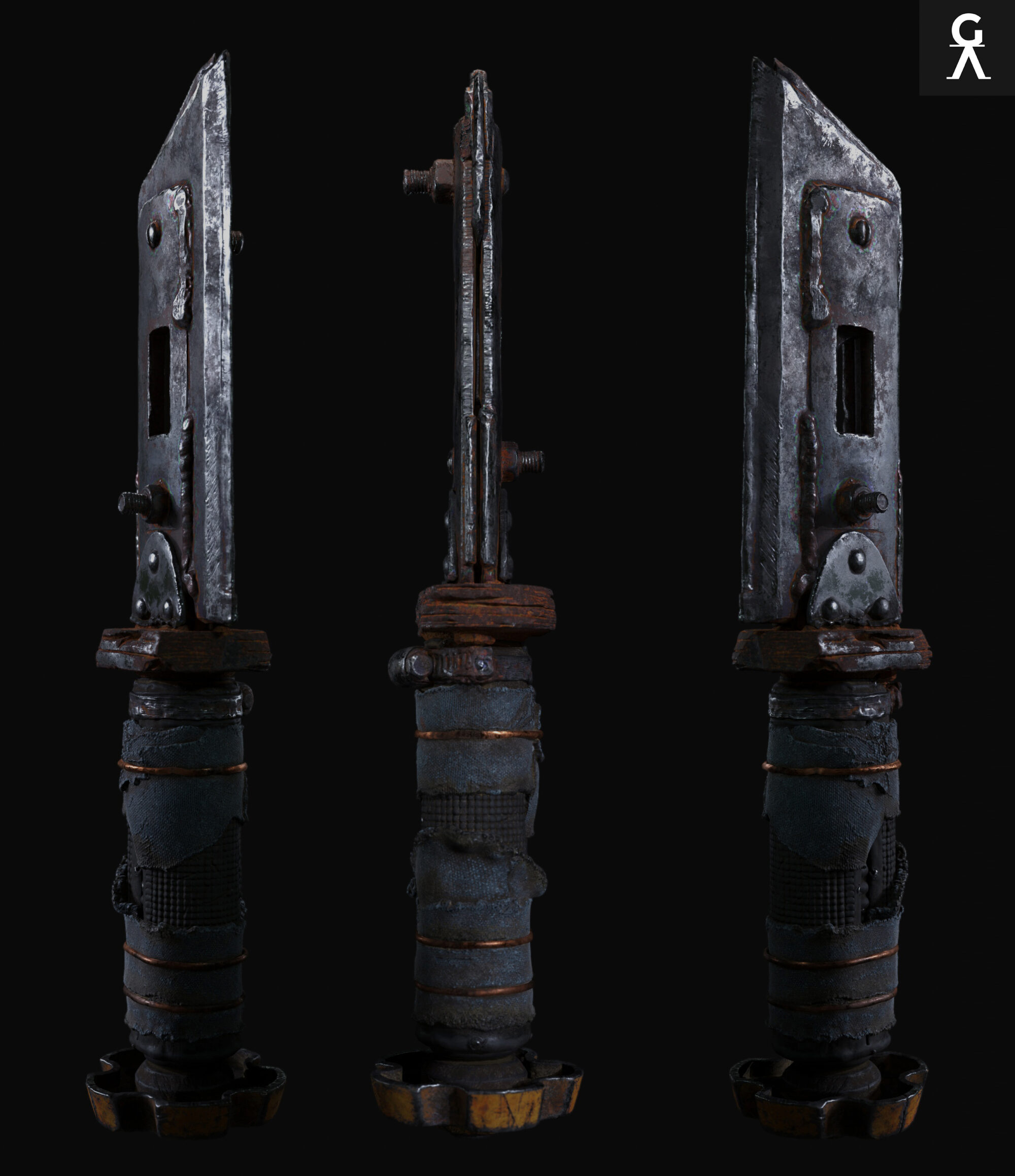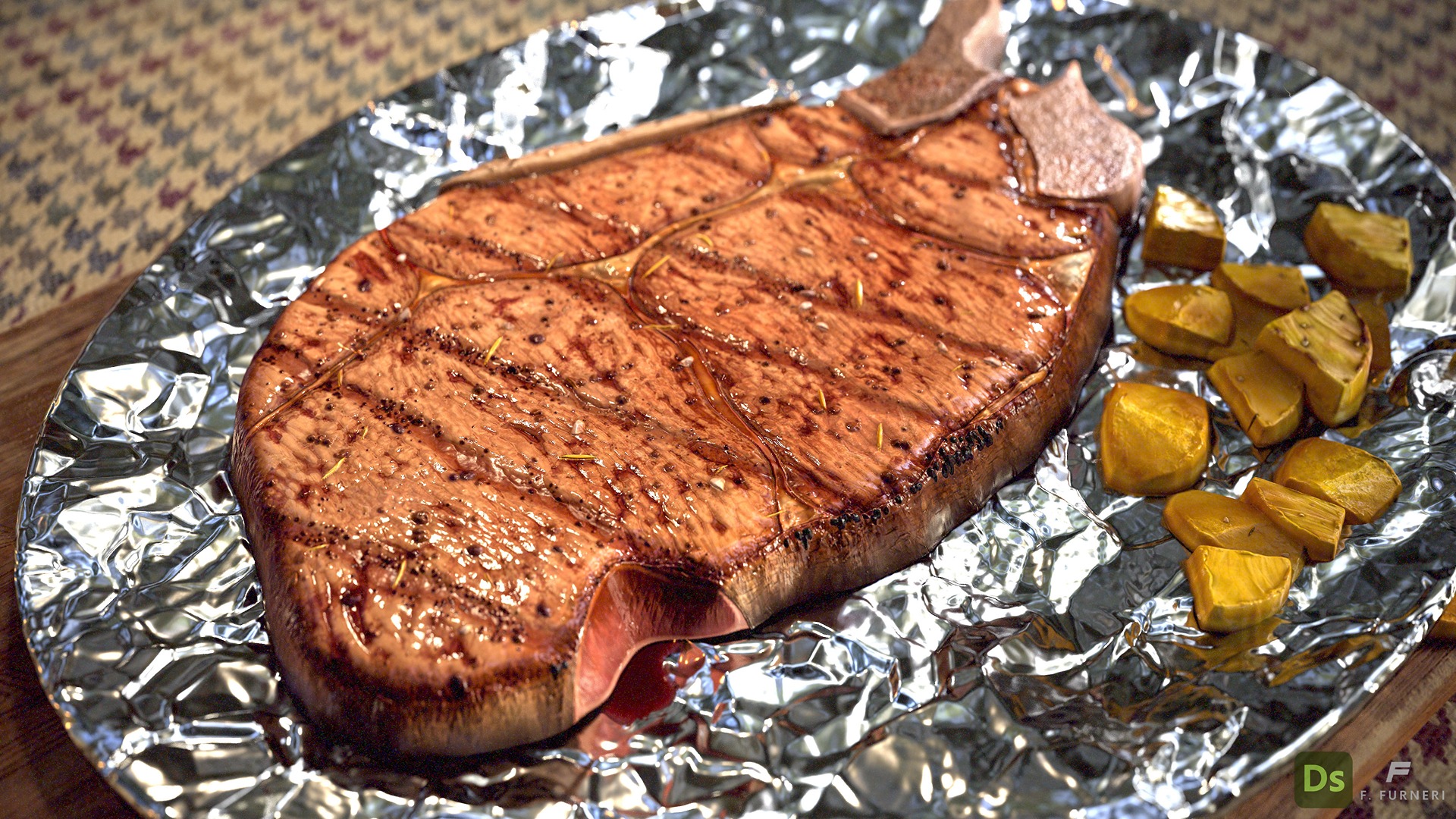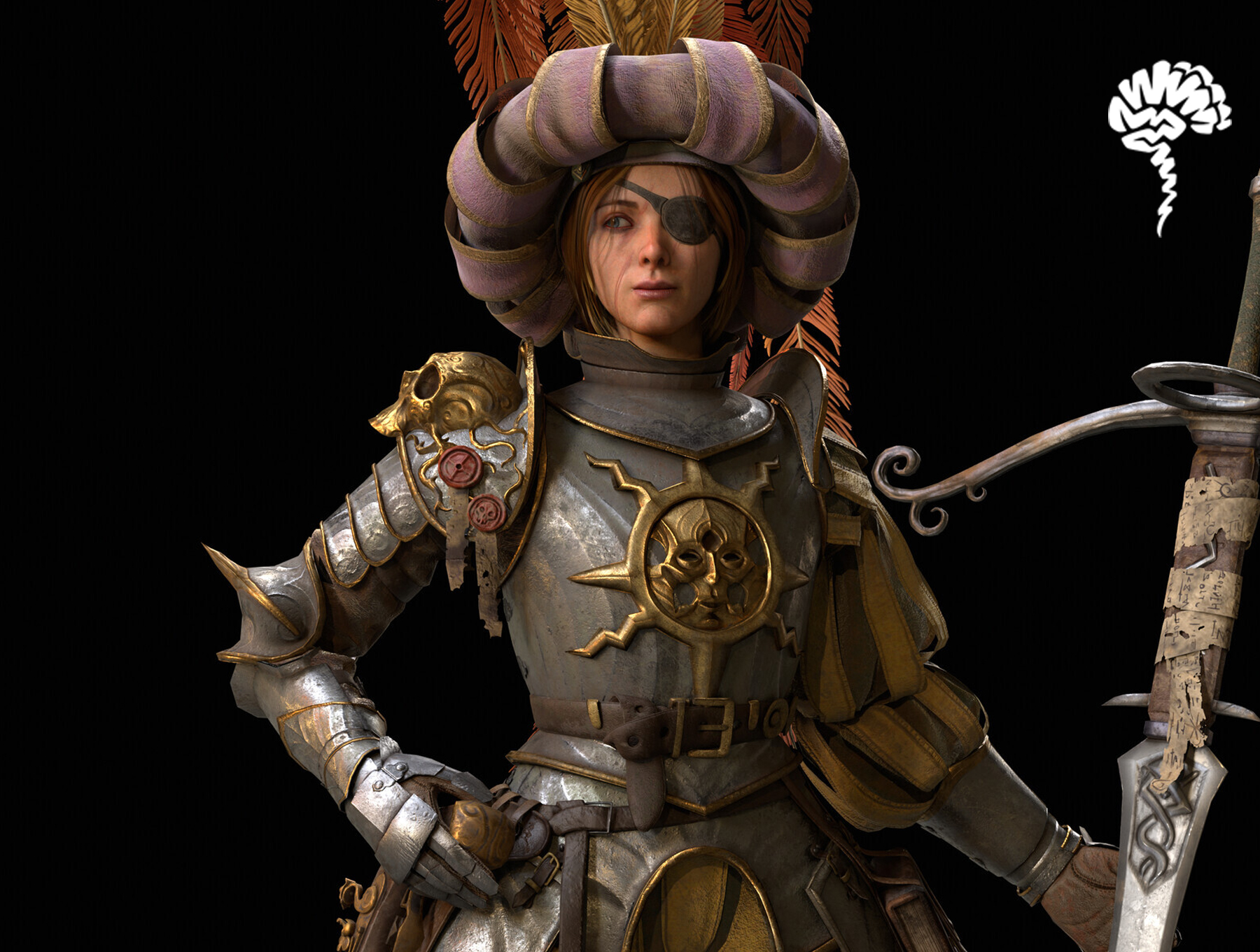Jack’s Secret Carousel


Introduction
Hello everyone!
My name is Olesya, and I'm a bit crazy.
As a child, I designed clothes for dolls and sold them to collectors. In school, I practiced sketching during math and physics lessons. In my spare time, I went to art school and painted walls in local cafes. At university, I was introduced to digital 2D art, which is how I found my way to ArtStation. Admiring the work of 3D artists, I decided to try my hand at 3D modelling, too. In the end, I realized that this is true love.
I really enjoy the process and feel like a magician. What I enjoy most is sculpting, texturing, and coming up with concepts.
So, why did I go crazy? Because only a crazy person would drop out of university, go against the will of their parents, and pursue a career in 3D art. But I did it, and I'm proud of it.
I am currently working in a VFX studio as a Prop Artist, doing a variety of work—modelling, sculpting, retopology and UV mapping. I am interested in working on other exciting projects!
Goals
I wanted to create something unconventional and sinister, something that could attract with beauty yet induce a sense of tension. I love the aesthetic of faded luxury in a horror style and enjoy looking at the facades of old buildings in Gothic, Baroque, and Rococo styles.
Architecture with an abundance of bas-reliefs and high reliefs, partially destroyed and covered with dust, excites me.
I am focused on skill growth, so another goal was to explore ways to create trees and present the project against a wildlife backdrop.
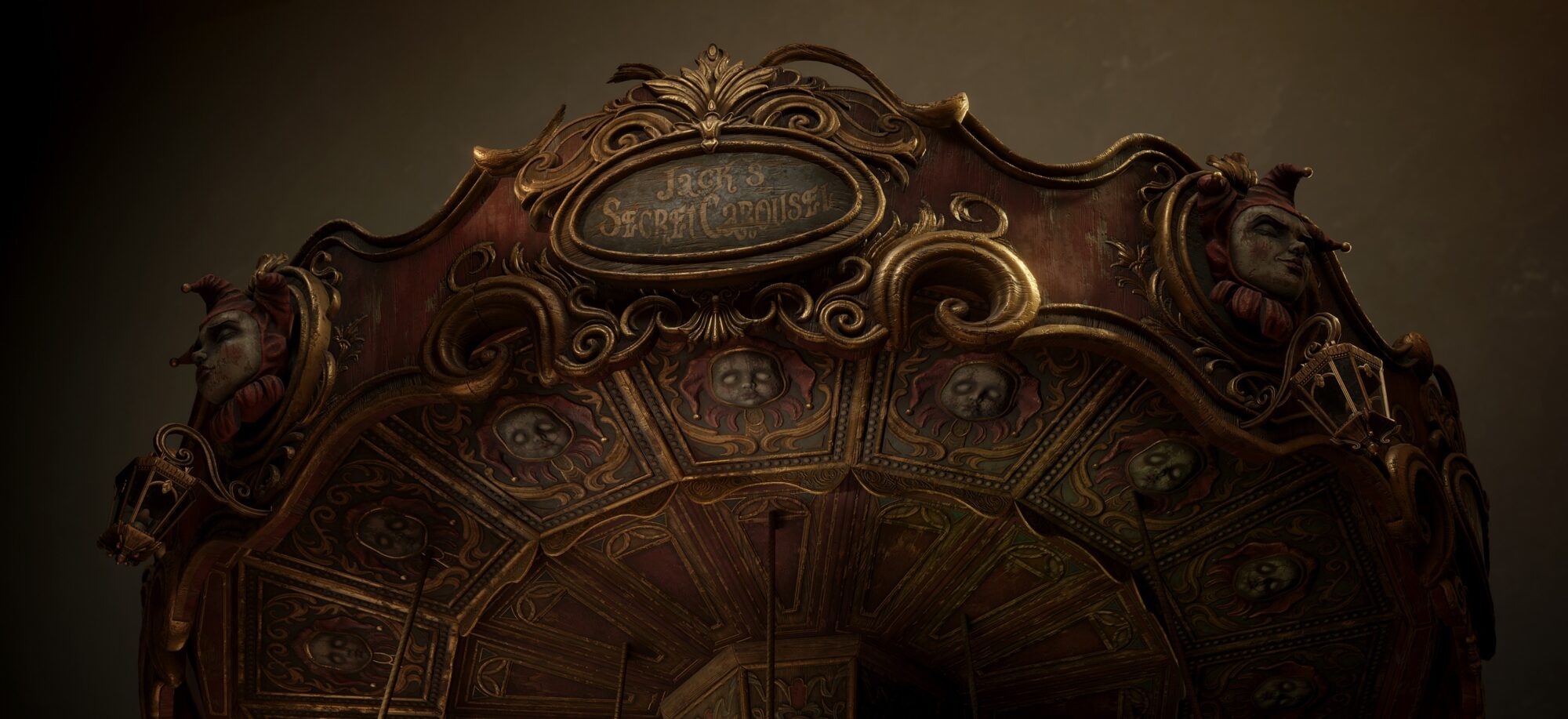
Tools
- Procreate (Sketching & creating alphas).
- Blender (modeling, UVs & Rendering).
- ZBrush (Sculpting).
- Marmoset Toolbag (Baking).
- Substance Painter (Texturing).
- SpeedTree (Creating trees).
Inspiration
You may have guessed that I am a Tim Burton fan. I am very inspired by the film Sleepy Hollow.
The ominous forest with bare, mangled trees evokes strong emotions in me! I thought a carousel would fit perfectly in such a dark forest.
Besides, a carousel is a great opportunity for creativity, imagination, and demonstrating sculpting and texturing skills.
And so, the idea was born.

References
The reference board evolved over time.
The most challenging part was finding high-quality references for old wooden horses.
I found some high-resolution photos where you could clearly see the texture of cracked paint layers and splits at an auction.

Using references made it much easier to develop designs. I experimented in Procreate with carousel designs, bas-relief ornaments, and horse blankets.
I made several sketches of the basic shapes and details of the carousel—some were modified and complicated during the process, and some reached the final stage without changes.
Blockout, Modelling & Sculpting
While working on the carousel, I used several pipelines to create low-poly and high-poly models.

Pipeline for Creating Bas-Reliefs, Manes and Tails of Horses
Before creating such complex details, it’s essential to sketch or find references online. Having a clear visual understanding of the final result simplifies the modeling and sculpting phases.
- In Blender, I form the silhouette and the model wire using retopology tools (face snapping and the Shrinkwrap modifier). The horse here serves as a mannequin—a helper for creating the mane.
At this stage, we form a flat object without thickness, making it easier to build the mane’s silhouette. - Next, I apply a modifier, disable snapping, and use the extrude command to add thickness to the mane.
- Then I export the mesh to ZBrush, increase the levels of subdivision and detail, and give the mesh smooth, expressive lines. After this, we have a high-poly model, but with a large number of polygons.
To optimize, I use the decimate master function to reduce the polygon count while preserving the shape, then retopologize in Blender to get a low-poly model.
I followed the same method for all elements of the bas-reliefs.
Pipeline for Creating Horses and Clowns
- In ZBrush, I form the horse’s silhouette and proportions using basic shapes, referencing horse anatomy.
- Next, I merge the parts with Dynamesh, refine the model wire using ZRemesher, and work out medium shapes without going into fine detail.
- I export the model to Blender for retopology, ensuring the mesh reflects the horse’s form to avoid artifacts when sculpting in the final step. Here, I prepare the low-poly horse model.
- Finally, I export the model back to ZBrush, where I project details from Step 2 onto the new version using the Project All function, and then add fine detailing.
The basic high-poly horse figure is ready!

In ZBrush, I created three types of carousel horses from this base sculpt, adjusting their poses using Gizmo, Transpose and Masking tools.

Wooden horses are prefabricated structures, with heads, bodies, and limbs carved separately and joined together.
Over time, most deformations appear at the joints. I added high-poly detailing of these joints and scratches using alphas.

UV & Baking
After preparing the low and high models, I moved to the UV stage. My carousel is quite large, with a height of 7.2 meters. I used overlaps to increase the texel density.
In total, I created 14 texture sets in 2K for distant views (average texel 8 px/cm); for close-up views, I used 4K textures (average texel 16 px/cm).
I tried to minimize polygons while retaining the beauty of smooth curves by transferring details to the Normal map, especially for flat surfaces like the floor, ceiling, stained glass windows, and horse ponchos.
I baked the Normal and Ambient Occlusion maps in Marmoset Toolbag and all other maps in Painter.
Texturing
As I said before in this project I used a Normal map to the maximum, so I took the time to draw the patterns manually in Procreate. In Procreate, I pre-positioned the pattern according to the location of the UV shells.
This allowed the patterns to immediately fall into place when applying the masks to the layers.
To make the miracle happen, I used color and height channels in the pattern layers in Painter.

To paint the horses and their parts for the first layer I used a wood smart material called Wood Ship Hull Nordic. It is a smart material built into the software. Horses are a prefabricated construction so the direction of the wood patterns depends on the parts of the horse.
Horses are not made from a single piece of wood because tree trunks that thick are rare. So I used multiple layers of wood patterns, for each of the parts of the horse.
I used Wood Ship Hull Nordic material on the first layer of almost all the objects in the project.

I had a lot of fun creating the horse paint material. Pay attention to steps 4 and 5, there I add spots of blue and red shades using procedural textures and reduce their intensity to 20-30%.
Such spots make the colour more interesting and realistic, as pure shades don’t exist in nature. I do this trick on every object.
To get interesting realistic textures you need to understand the material you are going to make. References are my best friends at this stage, I study them thoroughly.
It’s also very important to work out the roughness well because you can’t achieve realism with color alone. I usually use 3 – 6 layers of roughness:
- Base layer (uniform layer).
- A more matte layer (chaotic – using grunge and procedural masks).
- A glossier layer (chaotic – using grunge and procedural masks).
I can use multiple matte and glossy layers.
Trees
To create trees, I used a cool software called Speed Tree. With its help, you can generate trees. I took a stump scan from Quixel Megascans and used the program to grow several types of trees.
I felt like a wizard.
The program allows you to fine-tune the tree, the direction of growth of the trunk and individual branches, as well as their number, length, slope and many other settings.
Presentation
After creating the textures and trees, I moved on to assembling the scene. I used the Eevee engine to render the final composition.
I tweaked the roughness textures a few more times in Substance to get the desired result in the preview window in Blender.
For the grass, I used assets from Quixel Megascan.
In Blender, I used geometry nodes to generate the grass on the plane.
With the nodes in Blender, I blended the tree bark texture with the moss texture to make it more expressive. The moss texture was also taken from Quixel megascans.

Atmosphere
To create a mystical atmosphere I added fog. I didn’t use volumetric as it is a heavy load on my laptop.
Instead, I created an alpha in Photoshop, connected it to the plane and tinted it a little yellow.
The fog made the shot more expressive and voluminous.
The adventure doesn’t end with the fog.
Geometric nodes of grass, combined with a lot of trees (5-7 pieces) in the main scene slowed down my viewport quite a lot, so I drew a background with tree silhouettes in procreate, so as not to load the system.
For the background, I downloaded png pictures of trees from the internet and made a colour gradient from dark blue to light blue.
Light
Before setting up lighting, I watched Andrew Price’s video lectures on YouTube about lighting characters and environments. Andrew explains the five rules of lighting, which clarified my understanding of light, shadows, and visual focus.
There is no universal lighting scheme; drama and expressiveness depend on:
- Light direction
- Light colors
- Light source size
- Object readability
- Lighting emphasis
After the lectures, I intuitively arranged the lights using what I had learned.
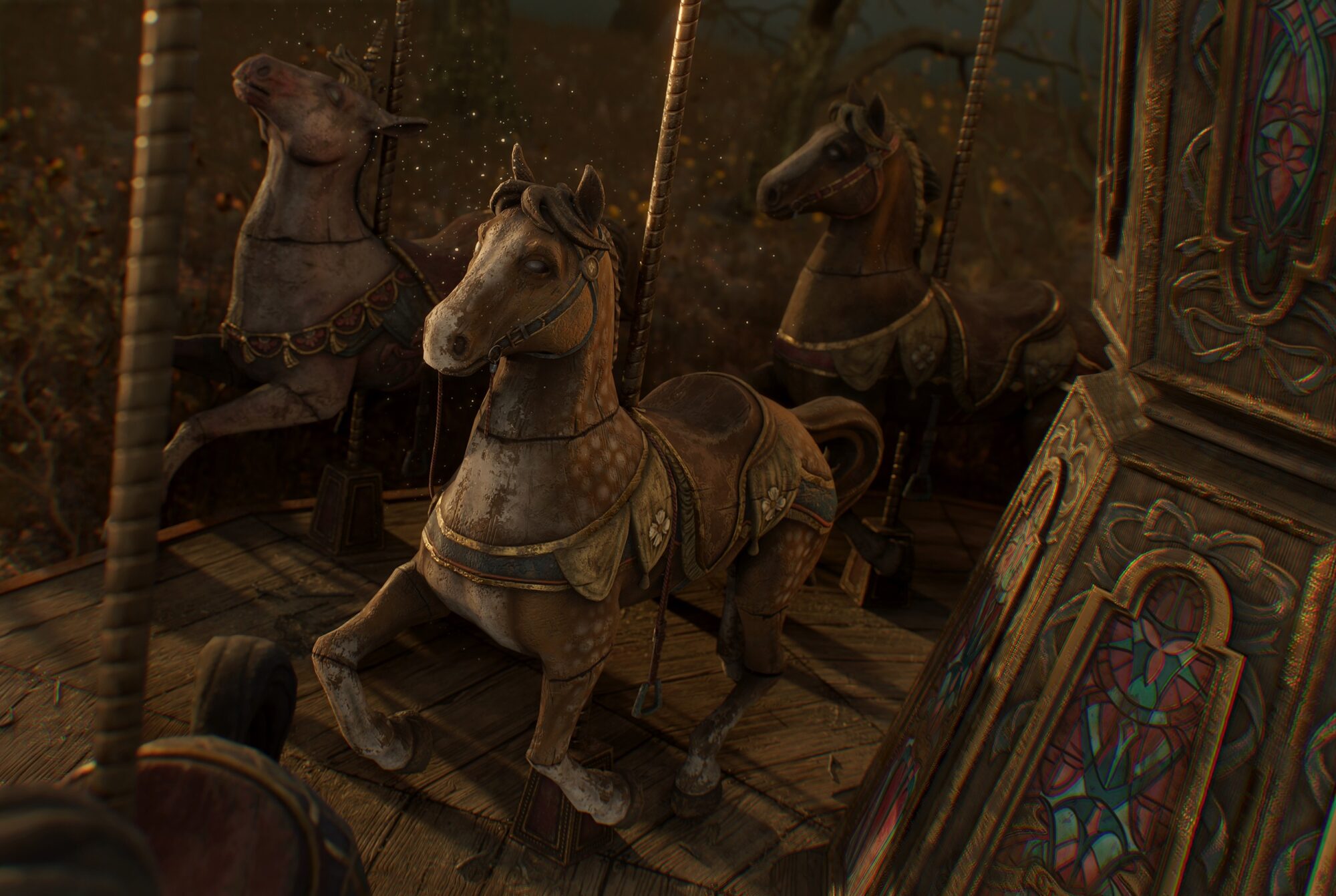
Conclusion
Through this project, I have consolidated and deepened my knowledge and skills and gained new experiences.
So guys don’t be afraid to experiment, a new experience is always good! And most importantly, in your personal projects, do what inspires you, what you really like, because this is one of the keys to motivation and quality performance.
May the force come with you!!!
I hope you found this article useful. Thanks to the Games Artists team for the opportunity to share this article with you.

